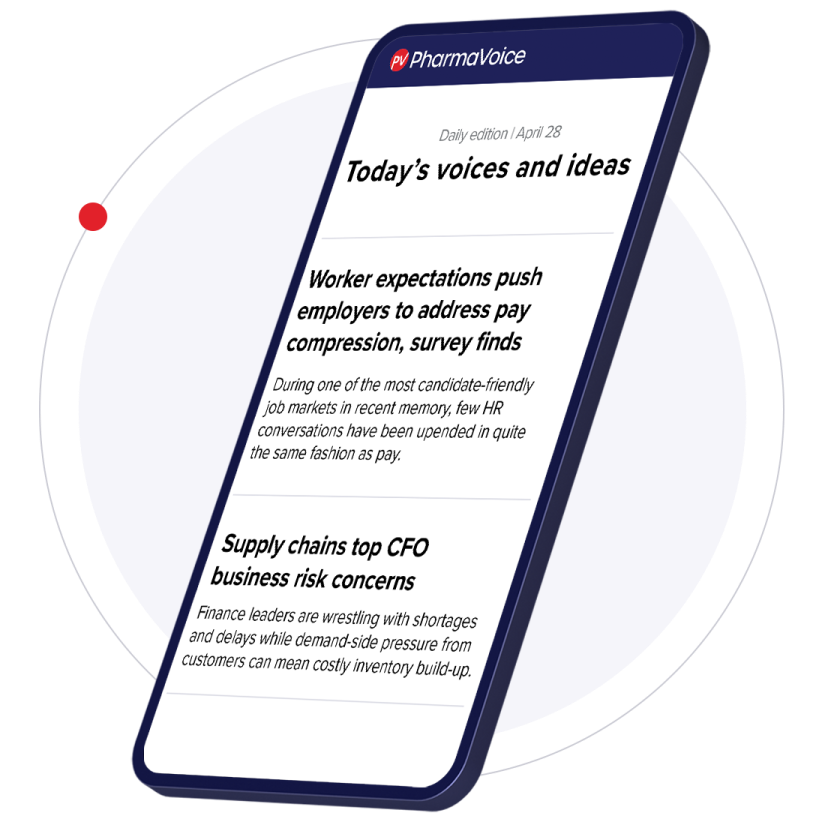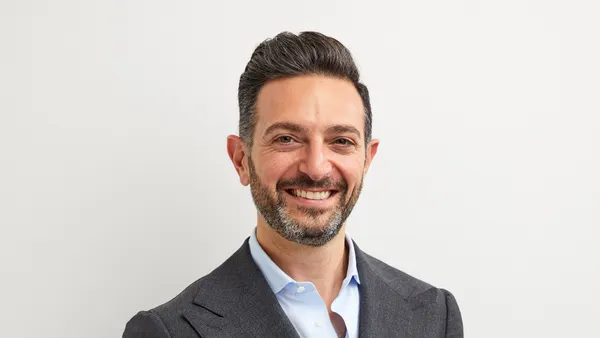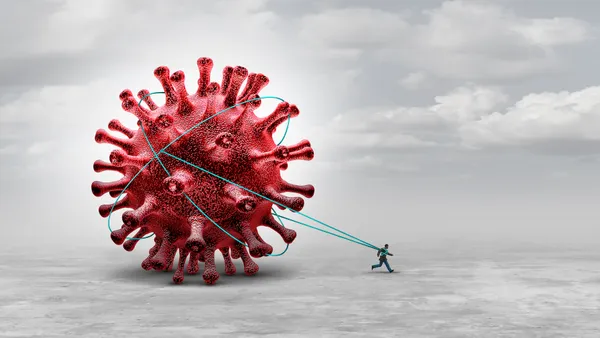Matthew Coffey, Ph.D. Barry Eisenstein, M.D. Robert Lanza, M.D. Christine Smith Ana Szarfman, M.D., Ph.D. From discovery through clinical development, the researchers and scientists behind the medicines are making a significant impact on the pipelines of today and of the future. Current positions Senior VP, Scientific Affairs, Cubist Pharmaceuticals Inc.; Clinical Professor of Medicine, Harvard Medical School Education A.B., Summa Cum Laude, Kenyon College, 1968; M.D., Columbia University College of Physicians and Surgeons, 1972 Place and date of Birth Brooklyn, N.Y.; Feb. 14, 1948 On his reading list The Tipping Point by Malcolm Gladwell; Freakonomics by Steven Levitt and Stephen Dubner; The Kite Runner by Khaled Hosseini; biographies of great individuals and leaders: Lincoln, Einstein, Churchill, Roosevelt, Mozart, Beethoven, Bach; historical works; New Yorker essays; books on digital photography Family Wife, Joyce; adult children, Julie, M.D., and Matthew, J.D. First job Five years of “training” at the UNC hospitals in Chapel Hill, N.C., getting very little sleep, dealing with life and death, and seeing both human suffering but also the great power of healthcare providers to heal Hobbies Photography, music, reading, theater (including film and TV drama), walking/hiking/biking, golf, tennis Infectious Enthusiasm Barry Eisenstein, M.D. Respected on both the business and science sides of pharma, Barry Eisenstein, M.D., has built a reputation for his depth of knowledge and ease in discussing the complexities of diagnosing and treating infectious disease. Early in his career he became enthralled with the investigative, solution-seeking aspects of internal medicine, particularly regarding infectious diseases. After 15 years in academia, marrying research with treating patients and gaining national recognition, Dr. Eisenstein was asked to be the infectious disease expert on Abbott Labs’ Scientific Advisory Council. This experience opened the door to industry as a place where he could more fully sate his appetite for problem solving at the molecular level, and practice the translational biology needed to get the job done. He then became head of infectious diseases discovery, and later clinical development, at Eli Lilly. Returning to academia for six years to lead tech transfer and clinical trials at the Beth Israel Deaconess Medical Center, Dr. Eisenstein pushed the message of linking academia, biotech, and large pharma to address unmet medical needs. That translational connection remains a key passion for Dr. Eisenstein in the effort to create new therapies. At Cubist Pharmaceuticals, where he is senior VP of scientific affairs, he played a key role in gaining FDA approval for Cubicin, the company’s IV antibiotic for the new indication of Staphylococcus aureus bacteremia. For Dr. Eisenstein, this was a defining moment in the industry. During a diverse and fulfilling career, Dr. Eisenstein has worked as a physician, with specialized training in infectious diseases, is a nationally recognized microbiologist and journal editor, an academic leader and head of a graduate education program, and mentor. In the pharmaceutical industry, he has been a leader in helping to discover and develop life-saving products, and he has provided national leadership on issues relating to public policy with regard to infectious diseases and antibiotic resistance. In turn, Dr. Eisenstein is inspired by those who exude passion, intellectual curiosity, courage, commitment, empathy, compassion, humor, integrity, credibility, and appropriate humility. As important as working to develop new therapies is for Dr. Eisenstein, so too is family. He credits his wife with raising two outstanding children while running a household and pursuing an assortment of occupations, and he is extremely proud of his two adult children — one a physician, one a lawyer — who now have children of their own. In fact, the pull of family is such that Dr. Eisenstein and his wife are relocating from Massachusetts to Washington, D.C., to be near their children and grandchildren. The move is not without its difficulties; they are leaving behind friends and memories, and dealing with the challenge of establishing a home office at a distance from the corporate center. Wherever he is based, however, colleagues continue to be inspired by his passion for uncovering life-saving treatments, his enthusiasm as an educator through his work as clinical professor of medicine at Harvard Medical School, and his commitment to academic-industry teamwork. Dr. Barry Eisenstein combines a passion for discovering life-saving treatments, a commitment to educating, a belief in academic-industry collaboration, and a devotion to family. Ana SZARFMAN, M.D., Ph.D. Taking Safety to the Next Level Ana Szarfman, M.D., Ph.D., played a leading role at the U.S. Food and Drug Administration to develop modern systematic and practical tools to speed the analysis of large databases. During her career at the FDA, it became clear to Dr. Szarfman that there was a desperate need for more accurate, faster, systematic, and practical methods for identifying safety problems to protect the public. Unwavering in her pursuit of this objective, Dr. Szarfman has done everything she can to get these technologies into the hands of safety reviewers. At first, it was difficult to challenge people to change their paradigms of data analysis. Yet such a paradigm change was needed in this age when drug safety databases may contain millions of records. Because of the incredible volume and complexity of data to be analyzed, there is the important need to visualize these data in a concise and systematic way. Dr. Szarfman has been able to make inroads with new analytical methods by concentrating on how things can be improved, by inspiring the best scientists and colleagues to participate in this quest, and by showing results that worked. In recognition of these accomplishments, in 2002 she was presented with both the FDA and CDER outstanding scientific achievement awards. A medical officer with expertise in pharmacoepidemiology, information systems, clinical pathology, basic research in tropical diseases, and pediatrics, Dr. Szarfman draws on the results obtained to enhance analytical approaches and decisions. Previously at the FDA, she was the primary medical reviewer of numerous anti-infective NDAs and assisted in the development of new electronic data analysis techniques. Dr. Szarfman maintains that increased public awareness around drug safety has been a turning point for the industry. She strives to improve cooperation between all those involved in bringing safe drugs to market from industry to regulatory authorities. Dr. Ana Szarfman has been a leader at the FDA in bringing new technologies to bear on drug safety problems by personally driving the implementation of data mining for safety investigation. Current position Medical Officer, Office of Translational Sciences, U.S. Food and Drug Administration Place of Birth Buenos Aires, Argentina Education M.D., University of Buenos Aires; Ph.D., Microbiology, Federal University of Rio de Janeiro The qualities that inspire her She is inspired by competent people who solve seemingly insurmountable problems in a systematic way, such as Dr. Ciro de Quadros, who directed the efforts to eradicate poliomyelitis from the Western Hemisphere On her reading list The Wrong Stuff: The Extraordinary Saga of Randy “Duke” Cunningham, the Most Corrupt Congressman Ever Caught by Marcus Stern, Jerry Kammer, Dean Calbreath, and George E. Condon Jr. Robert Lanza, M.D. Current position VP, Research and Scientific Development, Advanced Cell Technology Inc. Place and date of Birth Boston; Feb. 11, 1956 Education University of Pennsylvania, undergraduate and medical school On his reading list Essentials of Stem Cell Biology by Robert Lanza (said tongue in cheek) Career highlights Worked with Dr. Jonas Salk, who developed the polio vaccine, and Professor Christiaan Barnard, who performed the world’s first heart transplant Hobbies Horticulture and paleontology People who have inspired him The late Eliot Stellar, advisor and Provost of the University of Pennsylvania, and former Chairman of the Human Rights Committee of the National Academy of Sciences Courage Under Fire Though his work has sometimes been attacked by political and religious establishments, Robert Lanza, M.D., forges ahead with research based on the right thing to do scientifically. Dr. Lanza is boldly leading Advanced Cell Technology’s team of scientists toward bringing the benefits of human embryonic stem cell (hESC) technology to the tens of millions of people worldwide who are suffering from a host of degenerative diseases and other conditions. Committed to the science, Dr. Lanza believes treatments using hESCs have the potential to eventually offer not just treatments, but actual cures for Parkinson’s disease, macular degeneration, heart disease, and a whole host of other debilitating diseases. For him, the biggest challenge is surviving the political and ethical obstacles surrounding SCNT and embryonic stem-cell research. Last August, Dr. Lanza was the lead author of a paper published in Nature magazine, outlining the company’s proprietary method of deriving hESCs from embryos, without destroying the embryo. This directly addressed President Bush’s stated objections to federal funding of the research. With more than 25 years of research and industrial experience in the area of stem cells and regenerative medicine under his belt, Dr. Lanza is a thought leader in his field and has authored highly regarded books on topics involving tissue engineering, cloning, and stem cells. Among the books he has authored or edited are: Handbook of Stem Cells, Principles of Tissue Engineering, XENO, the Yearbook of Cell & Tissue Transplantation, and One World: The Health & Survival of the Human Species in the 21st Century. Awarded the 2005 Rave Award for Medicine by Wired magazine and the 2006 “All Star” Award for Biotechnology, Dr. Lanza and his work have caught the attention of major media organizations across the country, from Time and CNN to the New York Times and The Washington Post. Inspired by enlightened thinkers and human kindness, Dr. Lanza believes in the mission of advancing research, and he is looking forward to the next goal: to start human clinical trials using embryonic stem cells. A thought leader in his field, Dr. Robert Lanza has more than 25 years of research and industrial experience in the areas of stem cells and regenerative medicine. Christine Smith Passion, Patience, and Results Passion and patience are central parts of the job for Christine Smith, who leads a global group of researchers developing cutting-edge drugs at Pfizer Global Research and Development. The passion comes from working among dedicated and creative scientists supporting global biotherapeutic projects. Ms. Smith’s position requires managing many moving parts; her group of 20 scientists, based in Chesterfield, Mo., interacts with about 100 other scientists at six Pfizer research centers around the world. The technical nature of the job and the opportunity to interact across the globe, to have an impact on designing new medicines for patients, and to have a chance to participate in growing a drug discovery portfolio have been immensely rewarding. But there are also challenges that require patience. Ms. Smith oversees projects that can last for years, only to fail in the late stages. And because the industry overall is under constant challenge to discover innovative ways to create safe and effective medicines that make a difference to the patient, she and her fellow scientists have to maintain a high level of motivation and commitment to meet and deliver on this challenge. Assembling the collective knowledge from the failures, the successes, and new emerging technologies to design the best approaches can be overwhelming. Part of her job is to communicate what the team is striving to achieve, particularly explaining the positive side of her work to those who criticize drug makers for charging high prices or who might question pharmaceutical industry practices. She derives a huge sense of achievement and motivation from those projects that succeed and by being surrounded by others who share the drive to overcome challenges. She motivates her team with her positive attitude, enthusiasm, inclusiveness, and decision-making ability. Ms. Smith has a knack for looking at a series of inputs and quickly making an informed decision. Ms. Smith’s husband works down the hall directing research in arthritis and inflammation. They have an 8-year-old daughter and balancing work and family life can be a challenge, especially when she has to travel to different Pfizer sites, including California, Connecticut, and England. Throughout her career, Christine Smith has found role models in those who persevere through personal as well as scientific and career challenges; she is grateful to those who have trusted her to make the right decisions, as well as those who have believed that she could accomplish new and bold things. Current position Executive Director and Head, Biotherapeutics Center of Emphasis, Pfizer Global Research and Development Place of Birth St. Louis, Mo. Education B.A., Biology, summa cum laude, University of Missouri, 1981; M.S., Biology, University of Missouri, 1984 Family Husband, Walter Smith; daughter, Emily, 8 First industry job Monsanto Corporate Research Matthew Coffey, Ph.D. In Tireless Pursuit of a Cure June 5, 2007, was a moment to savor for Matthew Coffey, Ph.D., chief scientific officer and cofounder of Oncolytics Biotech Inc. This was the day that the company publicly announced positive results from its U.S. Phase I clinical trial examining the systemic administration of Reolysin in patients with advanced cancers. The results indicate that the compound can be delivered systemically to patients with advanced and metastatic cancers and cause antitumor activity. Dr. Coffey’s life’s work has been focused on the development of oncolytic viruses as potential cancer therapeutics. His pursuit began when he was a graduate student in the mid-1990s at the University of Calgary. Dr. Coffey’s thesis project on the reovirus eventually became the basis for the formation of Oncolytics Biotech. Since 1998, the company has progressed the potential product through preclinical and Phase I testing and is now expanding its Phase II program in Europe and the United States. Reovirus, an acronym for respiratory enteric orphan virus, is generally believed to inhabit the respiratory and bowel systems in humans. Reovirus is found naturally in sewage and water supplies. By age 12, half of all children show evidence of reovirus exposure and by adulthood, most people have been exposed. But the disease is non-pathogenic, meaning there are typically no symptoms from infections. The link to its cancer-killing ability was established after the reovirus was discovered to reproduce in various cancer cell lines. Specifically, the reovirus appeared to kill cancer cells with an activated Ras pathway without harming normal cells. The implications of such a discovery have been enormous. If a cancer therapy could be developed that could kill a broad range of human cancers, all without causing significant side effects, a tremendous contribution could be made to the scientific and cancer communities. Dr. Coffey has worked tirelessly to develop the intellectual property, the clinical program, and the manufacturing processes that are supporting the development of this novel and promising therapeutic. To date, more than 115 patients in Canada, the United Kingdom, and the United States have been treated with Reolysin, and side effects have been mild. The challenge now for Dr. Coffey and his team is to elevate the status of oncolytic virus therapy to the forefront. To make the dream a reality, Dr. Coffey seeks to work with those who demonstrate unbridled enthusiasm. Dr. Matt Coffey has worked tirelessly to develop the intellectual property, the clinical program, and the manufacturing process that is supporting the dev lopment Reolysin. Current position Chief Scientific Officer, Oncolytics Biotech Inc. Place of birth Medicine Hat, Alberta, Canada Education B.Sc., Cellular, Molecular, and Microbial Biology, University of Calgary, 1993; Ph.D., Department of Micorbiology and Infectious Disease, Subspecialty, Oncology, University of Calgary, 1998 On his reading list 1001 Books You Must Read Before You Die edited by Peter Boxall; The Cat in the Hat by Dr. Seuss First job Lifeguard
An article from


The Researchers & Scientists
Filed Under:
Research & Development









